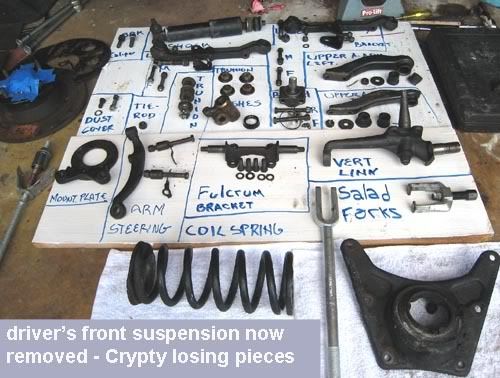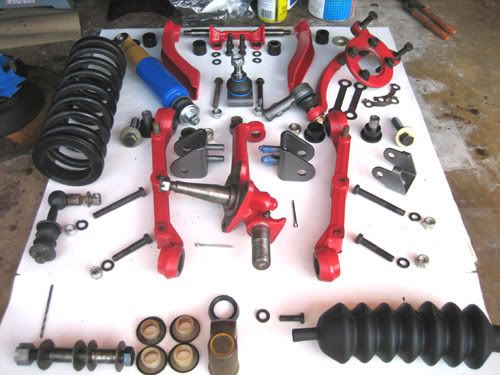pipercollins
Member
Offline
OK, I've got enough autumn left for about one good project before it's time to park the car away for the winter.
I intend to overhaul my suspension all the way around, but I'm starting with the front. I've already got new shocks and springs to put on. Also boots for the steering gear, which are obviously needed. After that, there isn't anything that obviously needs to be replaced. The only bushings that look really bad are the ones that come with the shocks, so that's handled. I can jack the car up, and grab each wheel trying to rock side to side and up and down I don't get any play. Ball joints at least look ok. There isn't much play in the steering and I'm pretty happy with that.
So the big question is, what should I replace on general principles and what should be left alone if there are no obvious problems?
I figure you automatically rebuild the trunnions, right?
Are there any other checks I should do to look for trouble.
All help is appreciated.
I intend to overhaul my suspension all the way around, but I'm starting with the front. I've already got new shocks and springs to put on. Also boots for the steering gear, which are obviously needed. After that, there isn't anything that obviously needs to be replaced. The only bushings that look really bad are the ones that come with the shocks, so that's handled. I can jack the car up, and grab each wheel trying to rock side to side and up and down I don't get any play. Ball joints at least look ok. There isn't much play in the steering and I'm pretty happy with that.
So the big question is, what should I replace on general principles and what should be left alone if there are no obvious problems?
I figure you automatically rebuild the trunnions, right?
Are there any other checks I should do to look for trouble.
All help is appreciated.

 Hi Guest!
Hi Guest!

 smilie in place of the real @
smilie in place of the real @
 Pretty Please - add it to our Events forum(s) and add to the calendar! >>
Pretty Please - add it to our Events forum(s) and add to the calendar! >> 


